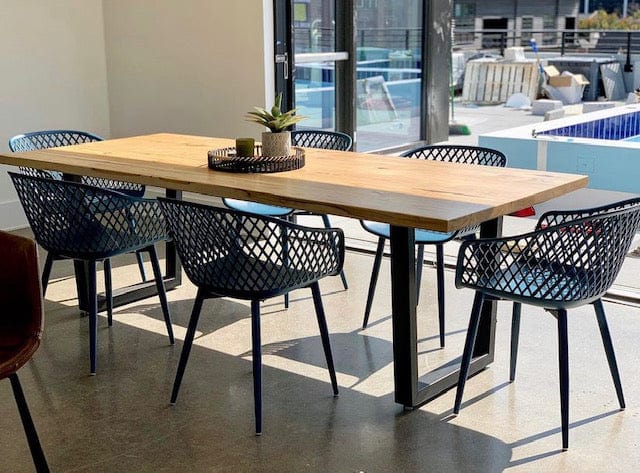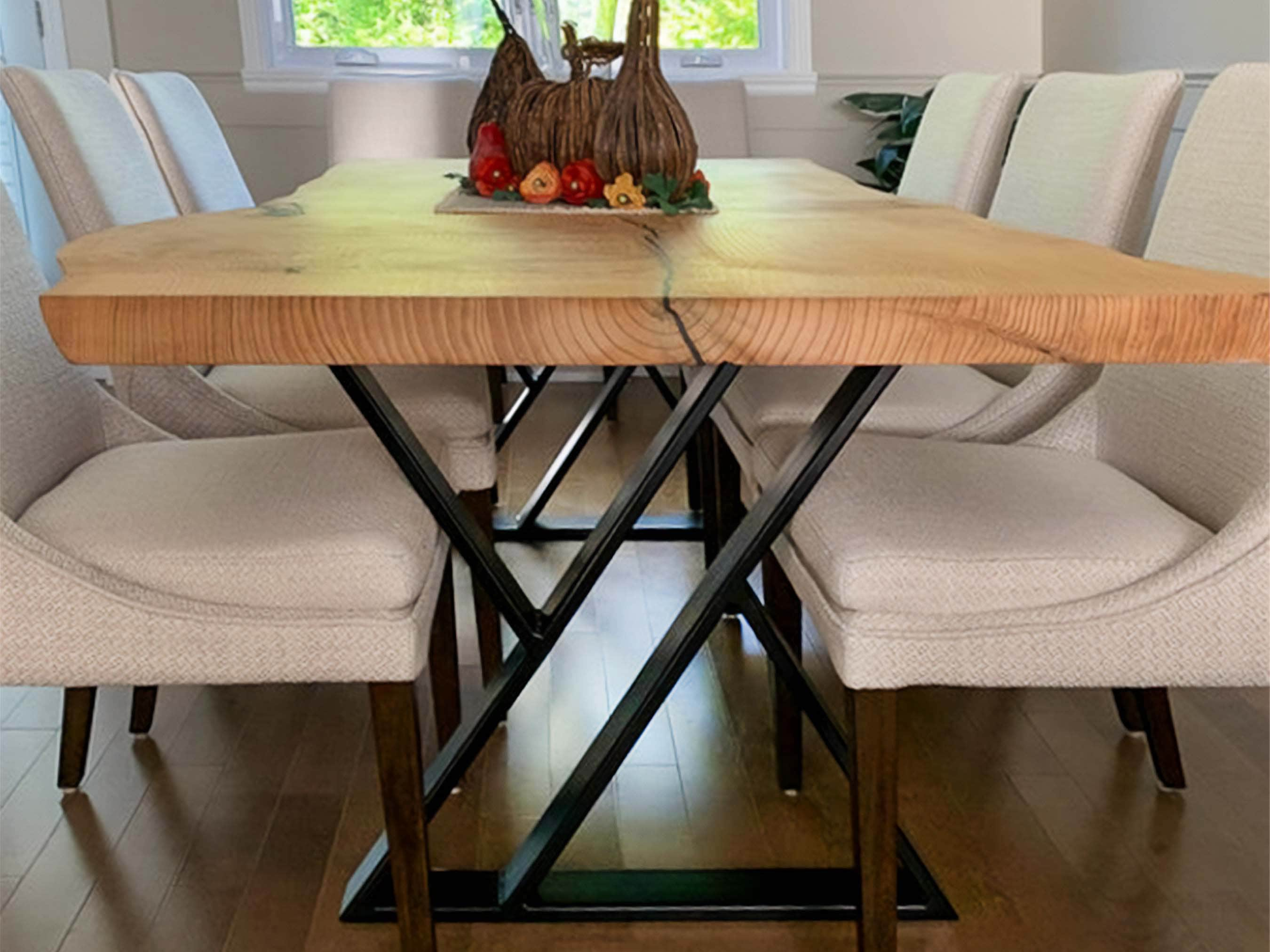Selecting the Perfect Eating Table: What Styles Work Best for Your Home?
Selecting the optimal eating table for your home can be a nuanced process that balances appearances and performance. To navigate these selections properly and find a table that truly matches your home, think about the complying with facets in detail.
Examining Your Room
Evaluating the dimensions and format of your dining area is an important first step in choosing the excellent table. Begin by determining the length and width of the space, representing entrances, home windows, and various other architectural attributes that might influence table placement. This ensures that your table not only fits yet also permits comfy motion around it.
Consider the number of individuals you generally captivate. A table should fit your home's everyday demands while offering sufficient flexibility for occasional visitors. As a rule of thumb, designate at the very least 24 inches of table size per person to make sure a comfortable eating experience.
It's also vital to maintain ideal clearance around the table. Preferably, there should go to the very least 36 inches in between the table side and walls or various other furnishings, allowing easy gain access to and movement. For spaces where chairs with arms or extra storage systems like buffets are included, enhancing this clearance to 48 inches is recommended.
Lights and ambience play significant duties. Make sure that your table lines up with existing lighting components or prepare for ample illumination solutions. This extensive spatial analysis assurances that your table not only fits literally but likewise harmonizes with your area's total capability and visual.
Popular Table Styles

Standard dining tables typically include luxuriant information, curved legs, and abundant wood finishes, evoking a sense of timeless beauty. They are perfect for homes with classic decoration or those wanting to include a touch of class to their dining location.
Modern dining tables focus on simplicity and clean lines, often including materials like glass and metal. These tables are optimal for modern rooms, supplying a smooth and uncluttered appearance that complements minimal style ideologies.
Rustic dining tables, on the other hand, stress natural products and a handcrafted look - dining room table legs. They typically feature redeemed wood and a distressed coating, creating a cozy and inviting ambience. These tables work well in farmhouse-style homes or those seeking a relaxing, natural feel
Industrial eating tables incorporate raw materials such as steel and timber, usually showcasing a practical aesthetic. This style is well-suited for lofts or metropolitan areas, adding a touch of tough charm and sturdiness to the eating experience.
Each style supplies distinct advantages, making it vital to select one that aligns with your home's overall design and your personal choices.
Material Options
When selecting an eating table, the option of product plays a vital duty in figuring out both the table's aesthetics and functionality. Wood, steel, glass, and composite materials each offer distinct advantages and obstacles, making it necessary to straighten the material with your home's decor and way of living demands.
Timber is an ageless and versatile alternative, readily available in selections such as oak, walnut, and mahogany. Known for its sturdiness and warmth, wood matches both traditional and contemporary interiors. It needs normal upkeep to protect against scratches and bending.
Metal tables, typically crafted from stainless steel, light weight aluminum, or wrought iron, are commended for their modern-day appeal and effectiveness. They are particularly suited for industrial or minimalist click here to read settings but can be prone to dents and may feel chilly to the touch.
Glass eating tables bring an air of sophistication and visibility, perfect for smaller spaces as they create an illusion of even more area. While simple to clean, glass can be susceptible to spots and needs mindful handling to prevent chips and cracks.
Composite products, such as MDF and plywood, deal cost-effective and customizable options, though they may do not have the durability of all-natural materials. Selecting the ideal product ensures your table is both a functional property and a visual delight.
Sizes And Shape Considerations
After determining the proper material for your eating table, the following factor to consider is selecting the right sizes and shape to suit your room. The form of the table dramatically influences the space's aesthetic and performance. Rectangular tables, one of the most typical shape, are ideal for larger areas and can accommodate a greater number of guests. They also allow for a much more official dining experience. Conversely, rounded tables foster a sense of affection and are excellent for smaller eating areas, encouraging conversation by removing corners and making every person really feel equally included.
Dimension is just as essential and need to be dictated by both the area's measurements and the variety of individuals you intend to seat frequently. As a rule of thumb, assign a minimum of 24 inches of table size per individual to this link make certain comfy dining. Additionally, think about the table's clearance space: there ought to go to least 36 inches in between the table edge and the walls or various other furniture. This ensures that diners can move conveniently without feeling confined. Prolonging tables use adaptability if you regularly organize bigger events, offering added seats when required without occupying added space daily. Picking the right shape and dimension makes certain both practicality and visual consistency in your dining location.
Matching Your Decor
Choosing a table that integrates with your existing decor is essential in creating a cohesive and welcoming room. Begin by examining your present interior layout style, whether it be contemporary, conventional, rustic, or eclectic. The table ought to enhance the overall aesthetic, not contend with it. As an example, a streamlined, minimalist table with tidy lines is ideal for a modern home, while a vintage, luxuriant table fits a much more standard setting.
Color and material are just as significant. If your style features cozy tones and all-natural products, take into consideration a wood table to enhance the natural feel. Alternatively, a glass or metal table may be Discover More Here better in an area controlled by amazing colors and commercial components. Focus on the finish, as it must mirror various other furniture and fixtures to preserve harmony.
A rough-hewn, recovered wood table can include personality to a rustic area, while a polished marble surface area can boost an elegant dining area. A well-matched eating table not just enhances aesthetic charm but additionally enriches the overall eating experience.

Final Thought
Picking the perfect table necessitates mindful factor to consider of room, style, products, shape, and dimension (dining room table legs). Conventional tables complement timeless interiors with abundant timber finishes, while modern tables suit contemporary setups via glass and metal. Rustic layouts introduce warmth using all-natural products, and commercial styles enhance city settings with raw aspects. Balancing the table with existing style ensures both capability and visual charm, contributing to a cohesive and aesthetically pleasing eating area.
Comments on “Discovering Different Styles for Dining Room Table Legs to Suit Your Aesthetic”